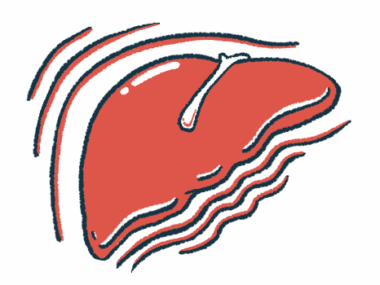Liver Lesions May Help Diagnose Porphyria Cutanea Tarda: Study
Written by |

Abnormal fatty lesions in the liver, detected via ultrasound, may be critical for diagnosing some cases of porphyria cutanea tarda (PCT), the most common form of porphyria, according to a study.
Its authors suggest that clinicians should use urinary tests to check for PCT in patients with unexplained liver lesions.
The study, “Multiple focal fatty changes in the liver in patients with porphyria cutanea tarda: A case series and review of the literature,” was published in the Journal of Clinical Ultrasound.
PCT is characterized mainly by abnormal sensitivity to sunlight, resulting in the formation of blisters or other skin lesions upon sun exposure. This form of porphyria also is known to be associated with liver problems, but liver involvement in the disease remains incompletely understood.
Here, scientists in Japan presented the cases of seven patients in whom abnormal liver lesions were instrumental for diagnosing PCT. Patients ranged in age from 57 to 80, and all were male.
On an ultrasound — an imaging technique that uses sound waves to produce images of internal tissues and organs — the patients had unusual “spots” of fatty tissue in the liver. In all seven patients, urinary tests that looked for abnormal levels of porphyria-associated molecules, called porphyrins, ultimately confirmed the diagnosis of PCT.
“In all seven cases, urinary porphyrin levels were measured for the first time following the detection of multiple [liver] lesions, leading to the diagnosis of PCT,” the researchers wrote. “Therefore, the finding of liver nodules on [ultrasound] imaging plays a major role in the diagnosis of PCT.”
Analyses of these patients, as well as other reports of liver involvement in PCT, suggested that individuals who consume alcohol are more likely to have liver abnormalities. In three of the seven cases, patients chose to stop drinking alcohol, which led to a marked improvement in liver structure and urinary porphyrin levels.
Liver nodules in PCT can look similar to cancer; in fact, two of the seven patients had previously been diagnosed with liver cancer, which further complicated diagnosis.
“Therefore, clinicians should consider measuring urine porphyrin levels for the differential diagnosis of PCT when these nodules are seen in patients, particularly in habitual alcohol consumers,” the researchers wrote.
The team also stressed the importance of carefully monitoring even noncancerous liver lesions in PCT patients, since people with PCT are known to have an increased risk of developing liver cancer.






